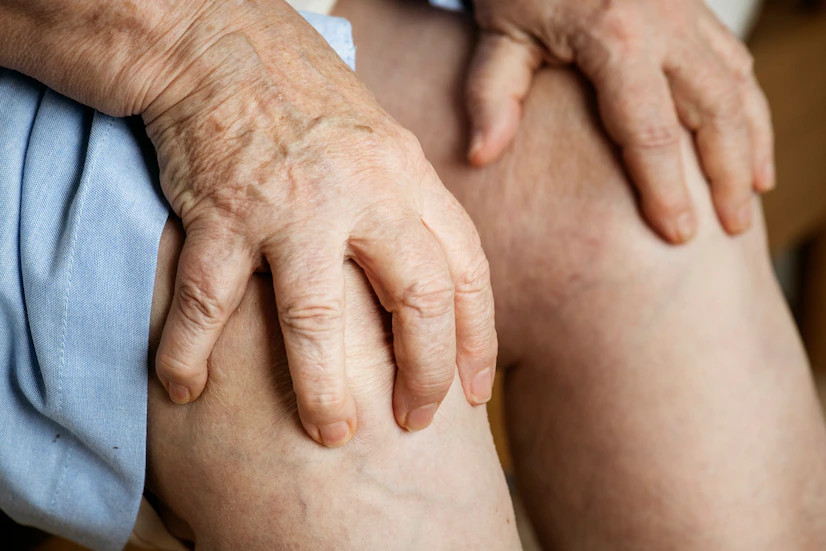You may have heard that bathing at night causes rheumatic disease, but this is actually a myth. However, if you already have the condition, bathing at night may exacerbate it.
So, what exactly is rheumatic disease, and what causes it?
What is rheumatic disease?
Rheumatic disease is a term that describes a variety of conditions affecting tendons, joints, ligaments, bones, and muscles. Many people believe that rheumatic disease is another term for arthritis. Arthritis refers explicitly to diseases that primarily affect the joints.
Rheumatic disease can be influenced by several factors, such as genetic factors, exposure to various chemicals triggering autoimmune reactions, and hormonal factors affecting the immune system and predisposing to rheumatic conditions, especially in women. These diseases are typically characterized by several common symptoms, such as joint pain, joint swelling, warmth sensation in the affected area, joint stiffness, or limited movement in the affected joints.
Types of rheumatic diseases
According to the National Institute of Arthritis and Musculoskeletal and Skin Diseases, there are more than 100 types of rheumatic diseases. Here are some of the most commonly found rheumatic diseases in the community:
Osteoarthritis
Osteoarthritis, also known as degenerative joint disease, is one of the most common types of rheumatic diseases. This condition occurs when the cartilage covering the ends of bones in the joint space deteriorates over time. This deterioration can lead to bone-on-bone friction, resulting in inflammation, pain, and joint stiffness.
Gout
Inflammation of the joints brought on by elevated uric acid levels is commonly known as gout. This disease is a form of joint inflammation due to the accumulation of uric acid crystals in the joints. This condition leads to inflammation, pain, and swelling, often experienced in the big toe joint.
Gout attacks often occur at night and come on suddenly. During inflammation, sufferers may experience pain and discomfort in the joints, inflammation and redness due to swelling, a sensation of warmth in the skin, and a limited range of motion.
Septic Arthritis
Septic arthritis is a condition in which bacterial, viral, or fungal infection spreads to one or several joints in the body, causing inflammation. Frequent symptoms of septic arthritis include fever, severe joint pain, and limited range of motion.
Rheumatoid Arthritis
Rheumatoid arthritis (RA) is an autoimmune disease that causes the immune system to attack the cells lining the joints. As a result, the joints become swollen, stiff, and painful. Over time, this condition can damage the joints, cartilage, and surrounding bones.
Psoriatic Arthritis
Psoriatic arthritis is closely related to psoriasis, an autoimmune skin disease characterized by thick, scaly patches of skin. Those with a history of psoriasis typically experience joint inflammation in psoriatic arthritis. As a result, in addition to joint inflammation, individuals may also experience chronic skin conditions such as red patches, scaly skin, and nail changes.
Ankylosing Spondylitis
AS (Ankylosing Spondylitis) is a type of rheumatic disease in which the spine experiences chronic inflammation, which can cause vertebral deformities over time. The most common deformity type is bone fusion. This fusion results in a loss of flexibility in the spine, leading to limited movement. The posture of individuals with AS can also change, usually becoming stooped. Over time, inflammation can also affect other parts of the body.
Since rheumatic diseases encompass various types, it's advisable to consult a doctor if you experience persistent joint pain, swelling, and redness, or prolonged joint stiffness, especially in the morning. You can also try using health consultation services by downloading the Ai Care app from the App Store or Play Store.
Looking for more information about other diseases? Click here!
- dr Hanifa Rahma
Barbara Kean (2022). What Are Rheumatic Diseases? Symptoms, Causes, Diagnosis, Treatment, and Prevention. Available from: https://www.everydayhealth.com/rheumatic-diseases/guide/
Debra Fulghum Bruce, PhD (2023). Rheumatology and Rheumatic Diseases. Available from: https://www.webmd.com/rheumatoid-arthritis/an-overview-of-rheumatic-diseases
Northwestern Medicine (2022). 7 Myths About Rheumatic Disease. Available from: https://www.nm.org/healthbeat/healthy-tips/seven-myths-about-rheumatic-disease
Mayo Clinic (2023). Ankylosing spondylitis. Available from: https://www.mayoclinic.org/diseases-conditions/ankylosing-spondylitis/symptoms-causes/syc-20354808
Mayo Clinic (2022). Gout. Available from: https://www.mayoclinic.org/diseases-conditions/gout/symptoms-causes/syc-20372897
Cleveland Clinic (2021). Septic Arthritis. Available from: https://my.clevelandclinic.org/health/diseases/22418-septic-arthritis
Cleveland Clinic (2023). Lupus (Systemic Lupus Erythematosus). Available from: https://my.clevelandclinic.org/health/diseases/4875-lupus
Mayo Clinic (2021). Osteoarthritis. Available from: https://www.mayoclinic.org/diseases-conditions/osteoarthritis/symptoms-causes/syc-20351925
NHS UK (2023). Rheumatoid arthritis. Available from: https://www.nhs.uk/conditions/rheumatoid-arthritis/
John Hopkins Medicine. Psoriatic Arthritis. Available from: https://www.hopkinsmedicine.org/health/conditions-and-diseases/arthritis/psoriatic-arthritis











